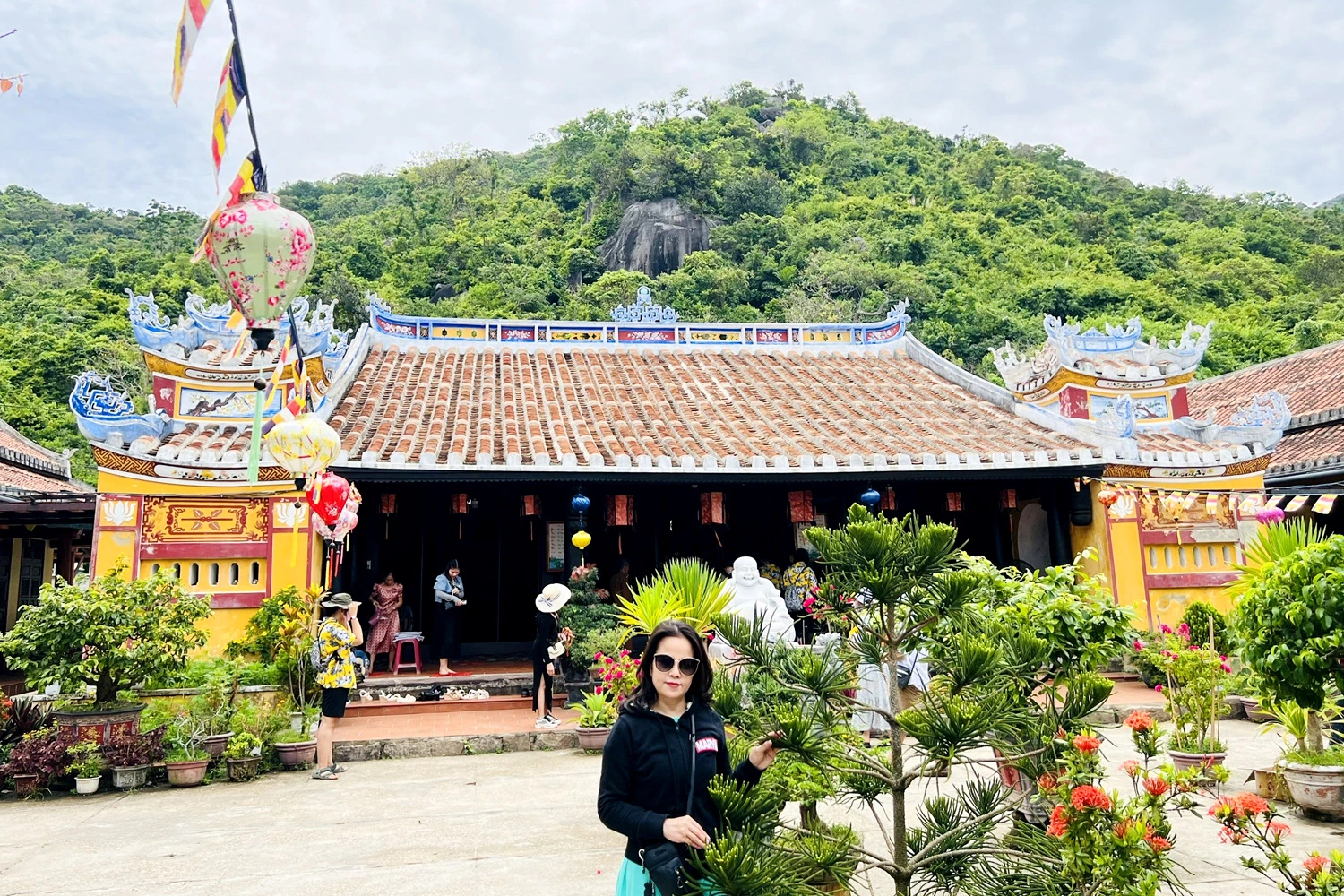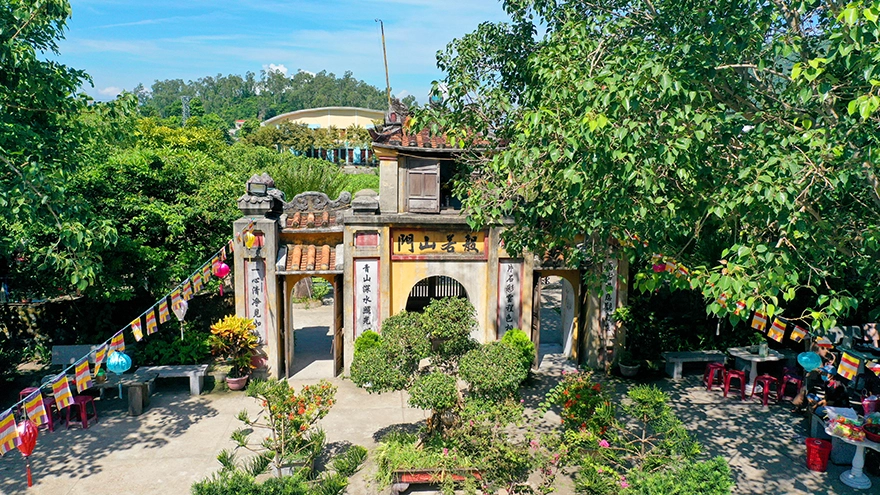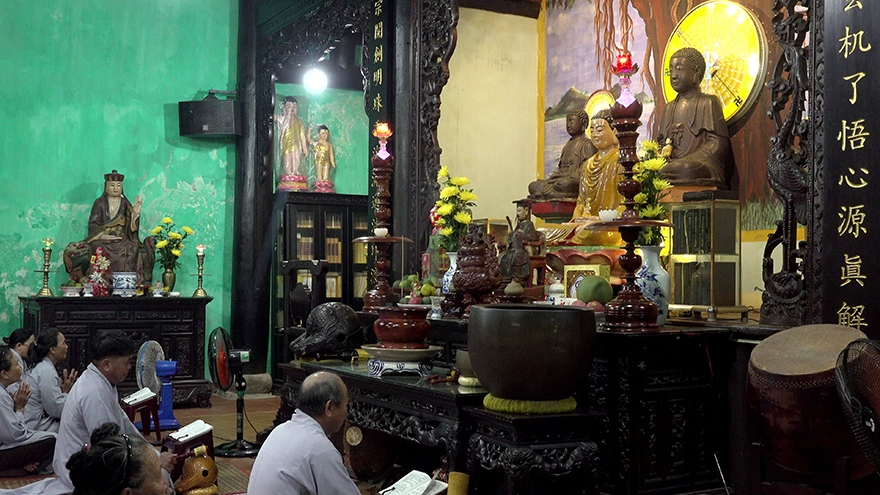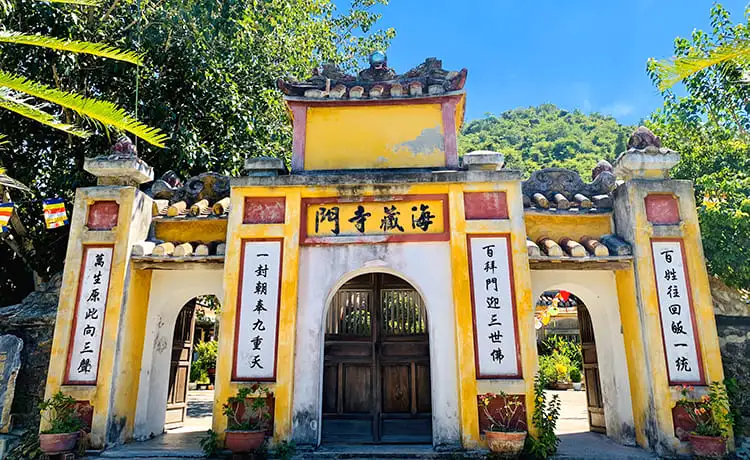Hai Tang Pagoda – The Ancient Temple Where Mystic Bells Echo Over Cham Islands
Nestled in the heart of the vast sea off Hoi An’s coast, Hai Tang Pagoda is more than just an ancient Buddhist temple — it is a sacred landmark deeply intertwined with the cultural, historical, and spiritual life of the islanders on Cham Islands.
At dawn, when the sun first peeks over the horizon, the sound of the temple bell resonates far and wide. It’s more than a call to prayer — it is the voice of the ocean itself, what locals refer to as “the sound of the sea tide” (hải triều âm) — a deeply spiritual echo that evokes a sense of timelessness, serenity, and profound connection with nature.

Geography & Historical Roots
Cham Islands (Cù Lao Chàm) — a stunning archipelago just off the coast of Hoi An in Quang Nam province — is made up of eight small islands blessed with breathtaking landscapes where golden forests, silver seas, and azure skies blend in harmony. Revered as both a tourist paradise and a site of rich heritage, Cham Islands are steeped in centuries of history.
Legends speak of this region in poetic terms: “Five clusters inland, seven isles afar,” a reference to the interconnectedness between land and sea. Historically, the islands were a strategic stopover for merchant ships sailing along the maritime Silk Road, trading silk, spices, and ceramics. Archaeological evidence links the islands to the prehistoric Sa Huynh culture from over 3,000 years ago, and over time, Cham Islands witnessed the rise and fall of the Champa Kingdom, Đại Việt dynasties, and the Nguyễn Lords.
Hai Tang Pagoda – A Sacred Presence Amid the Ocean
Built in 1758 during the reign of Emperor Cảnh Hưng, Hai Tang Pagoda stands as a symbol of Buddhist faith in Cham Islands. It has long served as a spiritual refuge for locals and seafarers alike — a place where travelers would stop to offer prayers for safe voyages and good fortune.
According to local lore, the temple is closely associated with Zen Master Hương Hải, who renounced worldly life to meditate on the island under the spiritual name Minh Châu Hương Hải. Originally built as a simple hermitage of bamboo and thatch, the temple evolved into a grand sanctuary, responding to the spiritual needs of the islanders and travelers.
Perched on a hill overlooking green rice fields and the vast sea, the temple offers a tranquil, soul-soothing retreat surrounded by nature.

Unique Architecture & Artistic Heritage
Hai Tang Pagoda stands out not only for its sacred aura but also for its classic Southern Vietnamese temple architecture. Its curved yin-yang tiled roof, intricately carved dragons, and gold-painted calligraphy reflect the spiritual elegance of ancient Buddhist design.
Inside the spacious main hall are grand altars adorned with statues of the Buddha, Guanyin (Goddess of Mercy), and Jade Emperor, alongside other deities. The harmonious blend of Buddhist elements with folk beliefs illustrates the spiritual depth and cultural richness of the local community.
A particularly sacred artifact is the bronze bell cast in 1770. According to legend, the bell’s sound once echoed all the way to the mainland — a mystical connection between the ocean and the land that has inspired generations.
👉 Discover more exciting Cu Lao Cham tour options right here!
A Living Temple – Festivals & Devotion
Hai Tang Pagoda remains a vibrant center of faith. Each year, major Buddhist festivals such as the Prayer for Peace (15th day of the Lunar New Year), Buddha’s Birthday (15th of the Fourth Lunar Month), and Vu Lan (the Seventh Month) draw thousands of pilgrims.
The temple also celebrates the holy days of Guanyin (on the 19th days of the Second, Sixth, and Ninth lunar months), filling the temple grounds with prayers and offerings. Beyond religious ceremonies, Hai Tang also hosts community activities and dharma lessons, helping preserve and pass down Buddhist teachings across generations.

National Heritage of Vietnam
In recognition of its historical, cultural, and spiritual significance, Hai Tang Pagoda was designated a national heritage site in 2006. It stands as a testament to centuries of cultural exchange and spiritual devotion — a beacon of Vietnamese Buddhist heritage amid the sea.
To this day, the bell of Hai Tang Pagoda continues to chime — a timeless echo that carries across ocean winds and into the hearts of those who listen. For the people of Cham Islands, this temple is more than a monument — it is a living soul, a sanctuary, and a symbol of enduring faith at the edge of the sea.

